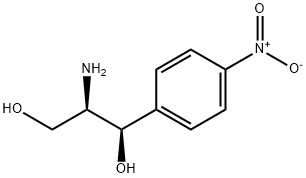Nitrophenol
- CAS NO.:25154-55-6
- Empirical Formula: C6H5NO3
- Molecular Weight: 139.1088
- SAFETY DATA SHEET (SDS)
- Update Date: 2024-12-18 14:15:30

What is Nitrophenol?
Chemical properties
There are three isomers of nitrophenol. The isomer of greatest concern, and the subject of ATSDR Toxicology Profile, is the p-isomer (4-nitrophenol). The meta-form is produced from m-nitroaniline, and the o-and p-isomers are produced by nitration of phenol. They are colorless to slightly yellowish crystals with an aromatic to sweetish odor.
Definition
ChEBI: 2-nitrophenol is a member of the class of 2-nitrophenols that is phenol in which one of the hydrogens that is ortho to the hydroxy group has been replaced by a nitro group. It is a conjugate acid of a 2-nitrophenolate.
General Description
A yellow crystalline solid consisting of a mixture of chemically similar isomers. Slightly soluble in water. The primary hazard is the threat posed to the environment. Immediate steps should be taken to limit its spread to the environment. Nitrophenol is combustible though Nitrophenol may take some effort to ignite. Burns to give toxic oxides of nitrogen. Used in the manufacture of other chemicals.
Air & Water Reactions
Slightly soluble in water.
Reactivity Profile
Organonitrate compounds, such as Nitrophenol, range from slight to strong oxidizing agents. If mixed with reducing agents, including hydrides, sulfides and nitrides, they may begin a vigorous reaction that culminates in a detonation. The aromatic nitro compounds may explode in the presence of a base such as sodium hydroxide or potassium hydroxide even in the presence of water or organic solvents. The explosive tendencies of aromatic nitro compounds are increased by the presence of multiple nitro groups. Phenols do not behave as organic alcohols, as one might guess from the presence of a hydroxyl (-OH) group in their structure. Instead, they react as weak organic acids. Phenols and cresols are much weaker as acids than common carboxylic acids (phenol has Ka = 1.3 x 10^[-10]). These materials are incompatible with strong reducing substances such as hydrides, nitrides, alkali metals, and sulfides. Flammable gas (H2) is often generated, and the heat of the reaction may ignite the gas. Heat is also generated by the acid-base reaction between phenols and bases.
Health Hazard
TOXIC; inhalation, ingestion or skin contact with material may cause severe injury or death. Contact with molten substance may cause severe burns to skin and eyes. Avoid any skin contact. Effects of contact or inhalation may be delayed. Fire may produce irritating, corrosive and/or toxic gases. Runoff from fire control or dilution water may be corrosive and/or toxic and cause pollution.
Fire Hazard
Combustible material: may burn but does not ignite readily. When heated, vapors may form explosive mixtures with air: indoors, outdoors and sewers explosion hazards. Contact with metals may evolve flammable hydrogen gas. Containers may explode when heated. Runoff may pollute waterways. Substance may be transported in a molten form.
Potential Exposure
(p-isomer): Possible risk of forming tumors, Suspected reprotoxic hazard. Nitrophenols are used as intermediates in production of dyes; photochemicals, pesticides, and pharmaceuticals; in leather tanning.
Shipping
UN1663 Nitrophenols (o-; m-; p-), Hazard Class: 6.1; Labels: 6.1-Poisonous materials.
Incompatibilities
Nitrophenols are strong oxidizers. Reacts violently with combustible and reducing agents. Contact with potassium hydroxide forms an explosive mixture. May explode on heating.
Waste Disposal
Controlled incineration-care must be taken to maintain complete combustion at all times. Incineration of large quantities may require scrubbers to control the emission of nitrogen oxides. In accordance with 40CFR165, follow recommendations for the disposal of pesticides and pesticide containers. Must be disposed properly by following package label directions or by contacting your local or federal environmental control agency, or by contacting your regional EPA office. Consult with environmental regulatory agencies for guidance on acceptable disposal practices. Generators of waste containing this contaminant (≥100 kg/mo) must conform with EPA regulations governing storage, transportation, treatment, and waste disposal.
Properties of Nitrophenol
| Melting point: | 44 °C |
| Boiling point: | 194 °C |
| Density | 1.5 g/cm3 |
| EPA Substance Registry System | Nitrophenol (25154-55-6) |
Safety information for Nitrophenol
Computed Descriptors for Nitrophenol
New Products
(S)-3-Aminobutanenitrile hydrochloride 4-Methylphenylacetic acid N-Boc-D-alaninol N-BOC-D/L-ALANINOL Tert-butyl bis(2-chloroethyl)carbamate 3-Morpholino-1-(4-nitrophenyl)-5,6-dihydropyridin- 2(1H)-one Furan-2,5-Dicarboxylic Acid Tropic acid 1-Bromo-3,5-Di-Tert-Butylbenzene S-2-CHLORO PROPIONIC ACID ETHYL ISOCYANOACETATE 2-Bromo-1,3-Bis(Dimethylamino)Trimethinium Hexafluorophosphate 4-IODO BENZOIC ACID 3-NITRO-2-METHYL ANILINE 1-(2,4-DICHLOROPHENYL) ETHANAMINE (2-Hydroxyphenyl)acetonitrile 4-Bromopyrazole 2-(Cyanocyclohexyl)acetic acid 4-methoxy-3,5-dinitropyridine 1-(4-(aminomethyl)benzyl)urea hydrochloride 2-aminopropyl benzoate hydrochloride diethyl 2-(2-((tertbutoxycarbonyl)amino) ethyl)malonate tert-butyl 4- (ureidomethyl)benzylcarbamate Ethyl-2-chloro((4-methoxyphenyl)hydrazono)acetateRelated products of tetrahydrofuran








You may like
-
 Nitrophenol CASView Details
Nitrophenol CASView Details -
 2033-24-1 98%View Details
2033-24-1 98%View Details
2033-24-1 -
 1975-50-4 98%View Details
1975-50-4 98%View Details
1975-50-4 -
 2-HYDROXY BENZYL ALCOHOL 98%View Details
2-HYDROXY BENZYL ALCOHOL 98%View Details
90-01-7 -
 2-Chloro-1,3-Bis(Dimethylamino)Trimethinium Hexafluorophosphate 221615-75-4 98%View Details
2-Chloro-1,3-Bis(Dimethylamino)Trimethinium Hexafluorophosphate 221615-75-4 98%View Details
221615-75-4 -
 61397-56-6 CIS BROMO BENZOATE 98%View Details
61397-56-6 CIS BROMO BENZOATE 98%View Details
61397-56-6 -
 14714-50-2 (2-Hydroxyphenyl)acetonitrile 98+View Details
14714-50-2 (2-Hydroxyphenyl)acetonitrile 98+View Details
14714-50-2 -
 118753-70-1 98+View Details
118753-70-1 98+View Details
118753-70-1